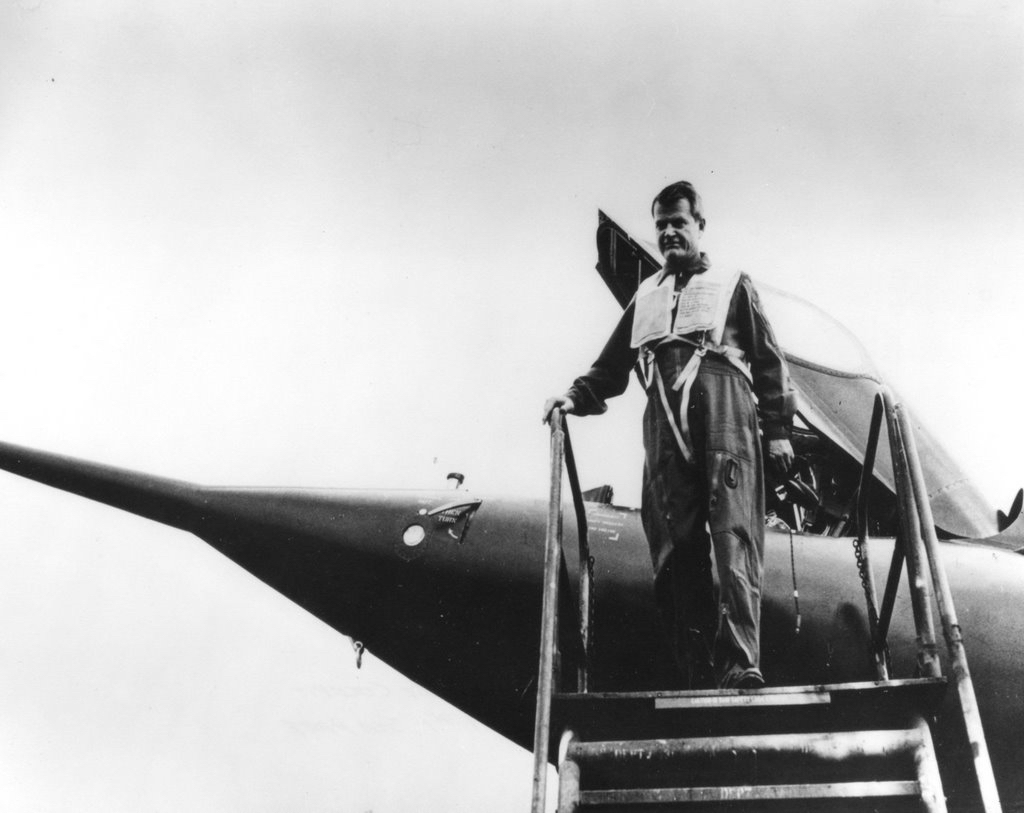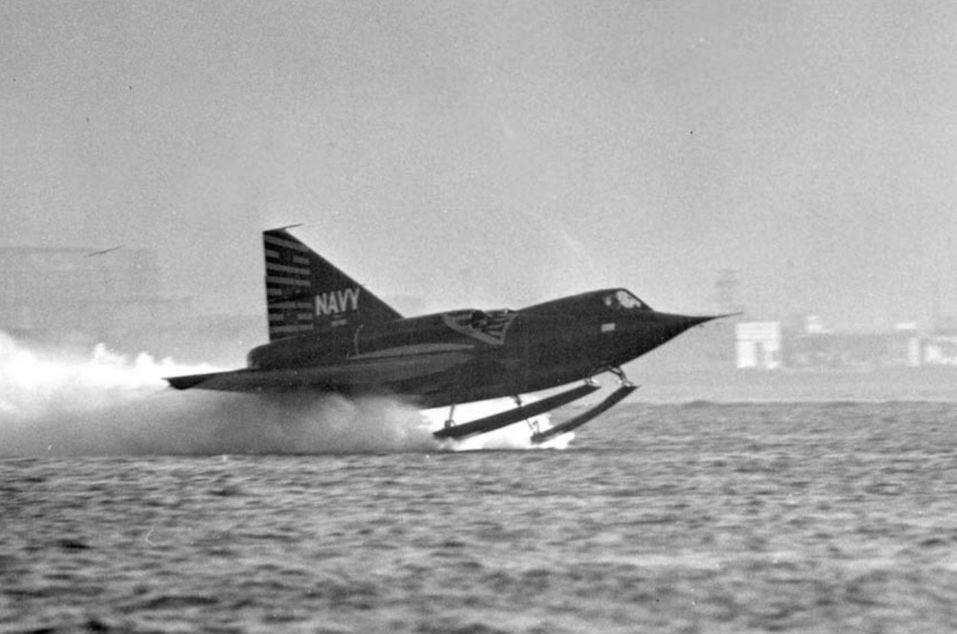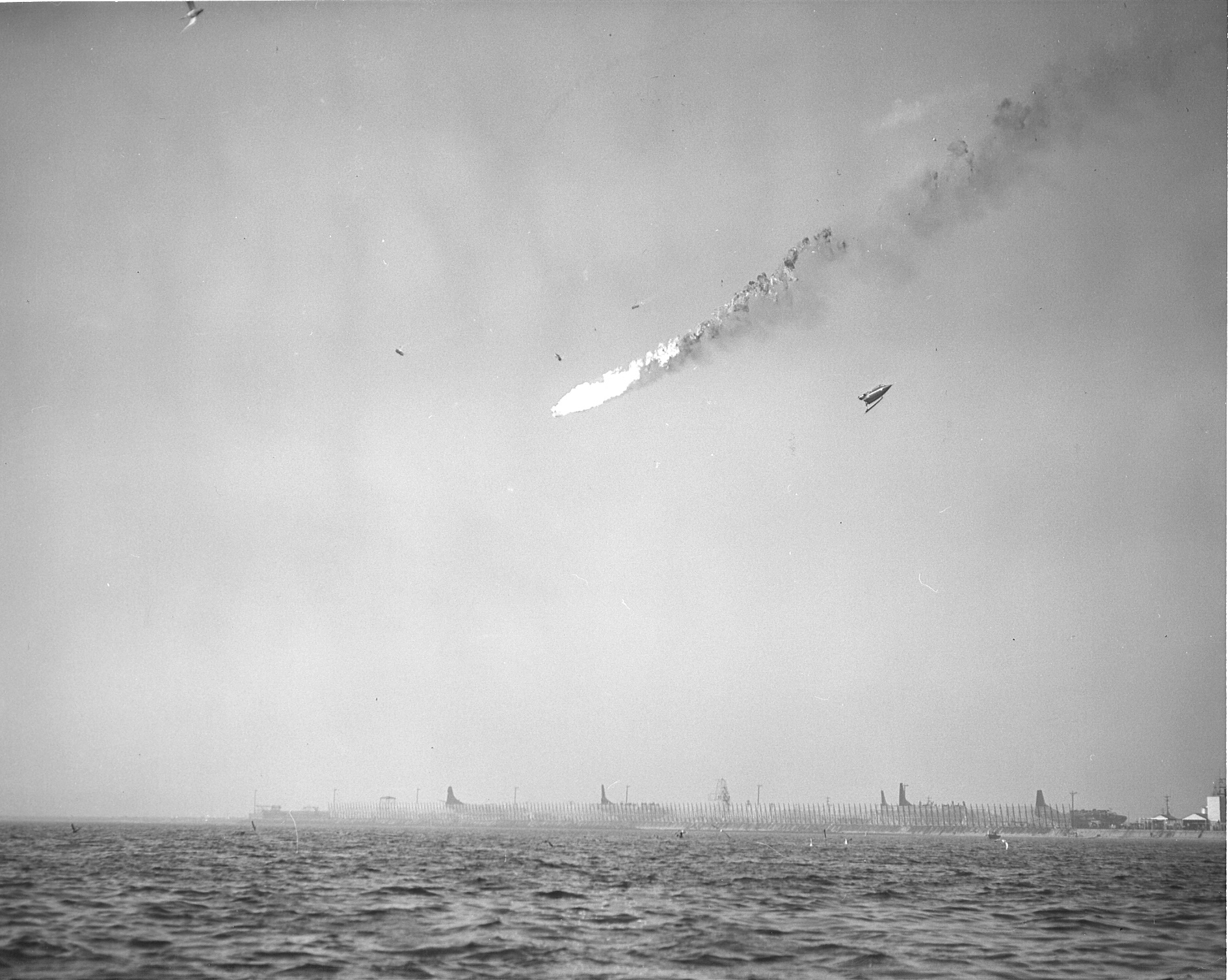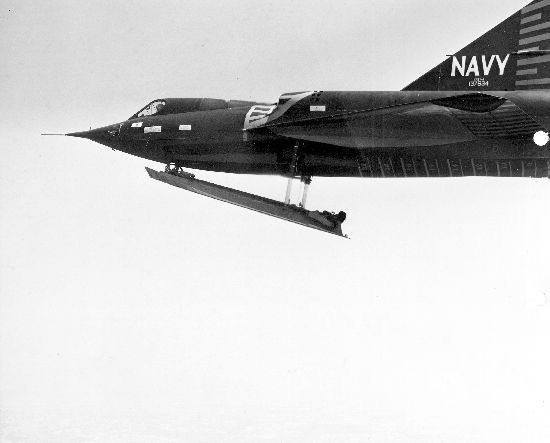The US NAVY YF2Y-1 Sea Dart: designed by Convair in 1948 and faithfully reproduced by ‘The Little Jet Company’. The world’s first and last supersonic water based interceptor, designed and built to fly and fight beyond the speed of sound, designed to operate on its own special runway… four fifths of the world.
This pilotless model aircraft is one quarter the size of the original, operating from water alone and capable of speeds in excess of 300 knots. It weighs 92 kilos and is powered by two JetCat P300RXG turbojets, providing over 60 kilos in static thrust.
This has never before been attempted.
History
1948
Convair entered a US NAVY competition for a supersonic interceptor with the SeaDart.

1953
Pilot, E.D. "Sam" Shannon successfully test flew XF2Y-1, 137634 from San Diego bay.

1954
August - test pilot Charles E Richbourg flew a second Sea Dart YF2Y-1, 135762, through the sound barrier in a shallow dive at 34,000ft. To this day the Sea Dart is the only flying boat to have broken the sound barrier.

1954
November – Sea Dart, 135762 disintegrated in midair over San Diego Bay during a demonstration for Navy officials and the press, killing Convair test pilot Charles E. Richbourg when he inadvertently exceeded the airframe limitations through a pilot induced oscillation.

1956
January - Convair pilot B.J. Long, the Sea Dart's lone surviving test pilot, took his final flight in the single ski aircraft 137634. Taking off on the calm water of the bay he flew out to open sea, where the test called for setting the aircraft down in swells ranging from six to twelve feet. The ensuing takeoff was almost catastrophic.
THE MODEL
We bring together the leading companies unique in their fields, from onboard electronics to the latest in composites to the turbines providing the thrust. The boundaries of achievement are stretched beyond anything which has gone before… while paying homage to those innovative men who designed this aircraft with only a drawing board, balsa models and their imagination to guide them over 70 years ago.


